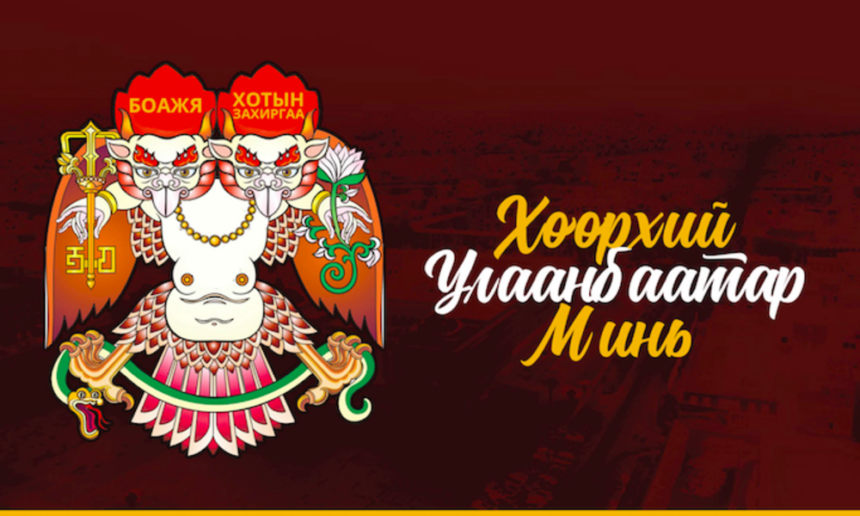(“THE VISION 2050” CRITICISM 7: ULAANBAATAR AND SATELLITE CITY)
According to ‘The Vision 2050’, thirty years from now, the capital of Mongolia, Ulaanbaatar, will be “a livable, environmentally friendly, and people-centered” city. At that time, it will have become a modern metropolis with satellite cities such as Aero City and Maidar; thus, a new system with several urban centers will have been constructed. Residents of Ulaanbaatar and its suburbs will be fully provided with housing and social infrastructures such as health and education will be radically upgraded to make them more comfortable to live in.
Fig.1. “The Vision 2050” variously developed cities
Furthermore, Ulaanbaatar will be people-centered rather than car-, building-, and capital-centered. All these ambitious plans sound nice to us residents, but they are not convincing. As I was reading “The Vision 2050” I wondered if it is possible to change fundamentally in the next 30 years, after 30 years of destroying this city. There are at least three reasons to think so:
- Diarchy/dual power government
- Populist projects
- The fact that citizens cannot elect the mayor directly
Double-headed bird
The symbol of Ulaanbaatar is the legendary Khan Garuda bird. At the dawn of the new century, as the Ministry of Nature and Environment started to control the area south of the Tuul River and the city authorities – the area north of the Tuul River, they became speculators disposing of the public land in accordance with personal interests; in that way, two administrations were formed and Khan Garuda became two-headed.
Urban and urban land planning was rendered meaningless, and if close to infrastructure, they can literally stack buildings on one another. Since a real estate registration of public, private, capital lands are not clear, ministries, city and district administrations are racing to seize the lands. Furthermore, the registration of land and property is completely hidden. Authorities are afraid to make records public of who bought and partially sold Zaisan and other hills of the mountain Bogd Uul. Moreover, information on the implementors of the construction project of public land and deadlines is neither available nor transparent, because the names of the authorities themselves are listed in the registration. The number of officials who keep records obscure and are living like parasites is continuously growing . Every new building that towers up in the capital is a living witness to corruption. I have already written in detail about a group that has been ‘parasiting’ on Ulaanbaatar’s property in my article “Three Peculiar Thefts ”. It is time to destroy all parasites.
Short-lived impossible projects
The generation of Ulaanbaatar’s authorities have been acting like kings, making arbitrary decisions without full preparations and without consulting the people in advance, and squandering public funds on high-cost, short-lived, and bizarre facilities. Recently, the city government announced a renovation of the park in front of the Sukhbaatar Square at a cost of 3.2 billion MNT. The very next day a fence was erected around it. An 85-meter-long fountain is expected to be built in the world’s coldest capital. In addition, the announced relocation of existing trees and reconstruction of the garden faced strong opposition by the residents.
The previous administration, as well, suddenly implemented a project turning Seoul Street into a “Bright Street”. At a cost of one billion MNT, lights were installed over a 200-meter-long section of the street, and in some areas, long seats were placed. However, two summers later, the next mayor halted the project.
The decision to relocate the city administration to Yarmag was reversed after tens of billions of MNT were spent on it. Read more about this in the Mongolia’s Sejong article.
There was another project on the blocking of the left turn between the city’s two longest and largest avenues (between the eastern and the western intersections on Peace Avenue). Although at a cost of 14 million MNT fences were built and signals were replaced, the project was brought to a halt since this slowed down the traffic instead of improving it. Instead of spending billions of MNT on the building of schools and kindergartens, money is being wasted on various short-lived projects, which seem to be a part of “parasitism” for citizens. The city’s government is facing public opposition since it ignores the voice of the people and does omit public hearings – ought to be held a year before implementation – when making decisions in the name of public interest. The decisions made are based on personal interests and political populism rather than on research and calculations. Thus, Ulaanbaatar’s situation resembles that of a car spinning in the mud.
Holding accountability
Ulaanbaatar’s residents are not able to stop all this outrage, since the mayor is appointed by the prime minister, not the citizens. Ulaanbaatar is one of the few cities in the world where the mayor is not directly elected by the residents; he serves the political party, not the citizens, and reports to the party. For example, Japan has a unified state structure; however, as mayors are elected directly by the people, they are not replaced when the government is replaced. Therefore, the city administration remains stable and accountable. Besides the mayors’ direct election and accountability, an increase of budget and tax authority of the capital must be addressed. Read the Municipal Bonds article for more details.
Unless urban governance reforms are implemented immediately, the capital will drown in major challenges, such as environmental degradation and water shortage, as the population will grow year by year. Unless citizens are held accountable along with their leaders, our city will not be comfortable for living in 2050.
2020.04.09
Trans. by Riya.T and Sungerel.U












